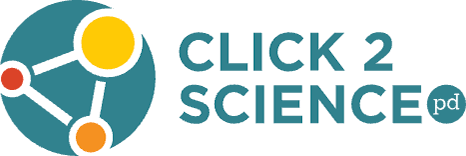Pride in STEM – Creating Inclusive STEM Learning Environments

Pride in STEM – Creating Inclusive STEM Learning Environments
For years, individuals in STEM fields have been calling for more inclusivity for groups like women and racial minorities. While these groups still need a voice to help increase their visibility, it is important to shed light on another underrepresented group in STEM fields – the LGBTQ+ community. A study published in March of 2018 helped shift some focus onto LGBTQ+ communities for the first time, as this group is often left out of quantitative analyses on the subject of exclusivity in STEM fields. A paper published in 2016 highlighted the increased importance of creating inclusive learning environments in interactive science courses. Since it is Pride Month, how can STEM fields create more collaborative learning experiences for marginalized groups – like LGBTQ+ individuals – in the future? Below are three professional development resources that can be utilized in out-of-school time (OST) programming to ensure future generations experience more inclusive environments in STEM.
Confronting Biases
Professionals in STEM fields need to challenge themselves to take Harvard’s Project Implicit test. One of the first steps to creating inclusivity is understanding one’s own biases towards a marginalized group. The public focus on a lack of LGBTQ+ individuals in STEM fields helps professionals comes to terms with some of their internal biases, but STEM professionals can go one step further by empirically measuring their personal biases. Furthermore, OST programs can utilize the Project Implicit test to begin conversations with youth about the importance of understanding one’s bias. This downloadable training guide gives step-by-step instructions to aid training staff in creating more inclusive futures.
Safe Spaces
Another way to help LGBTQ+ individuals enter the STEM fields more seamlessly is through the creation of safe learning environments in OST programs. OST staff can utilize the “Creating a Safe Space for Vulnerable Youth” webinar (shown below) to gain more insights on how to create inclusive learning experiences. The need for programs like this has become more important due to the increase in individuals identifying as LGBTQ+ compared to previous generations. According to a Gallup poll, young adults were three times as likely as seniors to identify as LGBTQ+. STEM professionals can help create more #PrideInSTEM by implementing focused strategies to create safe spaces for vulnerable youth.
Strategies for Inclusive Youth Learning
In order to make all youth feel included, use this downloadable guide to start a conversation in your program on how you can better serve marginalized youth. Programs can use the DIVEE method to make learning engineering techniques more accessible to vulnerable youth populations. By using the DIVEE method like Lemond does below, LGBTQ+ youth will be able to relate more closely to STEM fields and feel involved moving forward.
